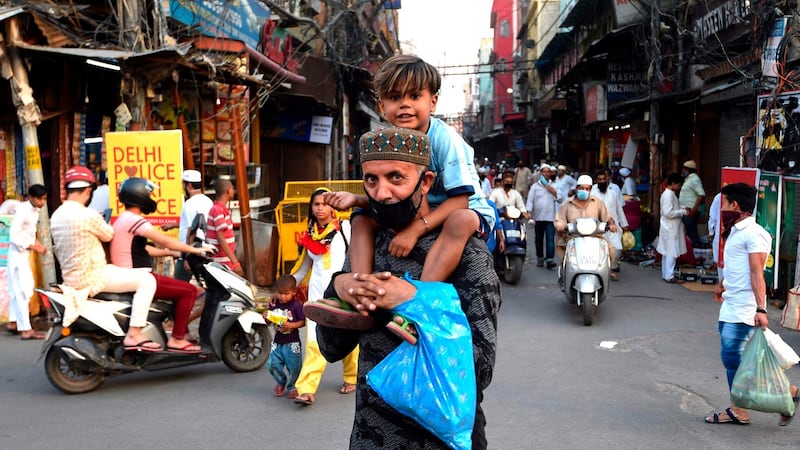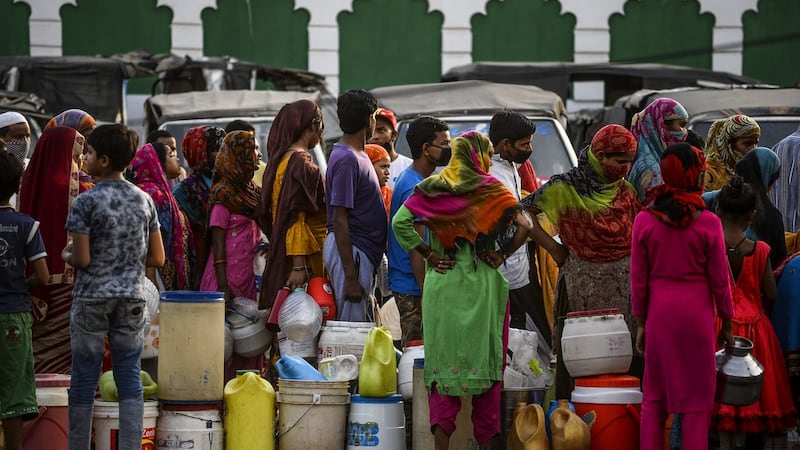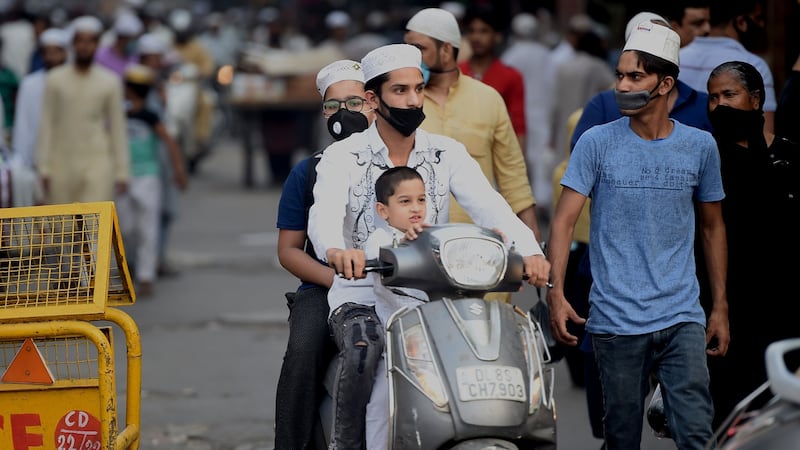Its coronavirus cases are skyrocketing, putting it among the world's most worrisome pandemic zones in recent weeks. Nonetheless, India is reopening, lifting its lockdown at what experts fear may be the worst time.
Migrant workers are becoming infected at an alarmingly high rate, leading to fresh outbreaks in villages across northern India. Public hospitals in Mumbai are so overwhelmed that patients have taken to sleeping on cardboard in the hallways.
Doctors fear that the lockdown, which started over two months ago, has been eased too soon, after slowing the virus but failing to flatten the new-case curve as effectively as other nations have. If India does not find a way to curb the virus in high-risk states, epidemiologists project that its total caseload could approach 1 million within several weeks.
"India is not out of the woods," said Dr Ashish Jha, director of the Harvard Global Health Institute.
“From a public health point of view, I do think the lockdown has brought the disease under control,” he said. “But of course, as restrictions have lifted in the last week or 10 days, the number of cases has started to rise quickly.”
At first, India moved aggressively to contain the virus. In late March, prime minister Narendra Modi implemented one of the most severe lockdowns anywhere, ordering all Indians to stay inside, halting transportation and closing most businesses.

But the lockdown was brutally hard on the poorest Indians and those who rely on day labour to survive. And the country’s economy, which had already been ailing, was sustaining deep wounds. Government officials began lifting some restrictions last month, hoping to ease the suffering.
Outbreaks
On Sunday, Mr Modi extended the lockdown to June 30th in high-risk zones but allowed restaurants, shopping centres and religious buildings to reopen elsewhere from June 8th.
Infections are rising quickly now, however, with outbreaks in some states that had reported few cases. This month, India's doubling rate for new infections averaged about 12 days, putting it on par with countries of high concern like Brazil.
That number compares poorly to those of other nations where stay-at-home orders were imposed. In the United States, the doubling rate improved from about 26 days at the start of May to about 50 days last Monday. Italy crossed the 100-day mark early this month.
But in India, a nation of 1.3 billion people, locking down has posed different challenges than in many western societies. Its city areas are among the world’s densest, with millions living in packed slums, sometimes sleeping eight to a room.
Almost half of India's cases have been traced to just four cities: New Delhi, Mumbai, Chennai and Ahmadabad. "Social distancing is inherently very difficult in India," Dr Jha said. "I don't know if India could realistically get to 26 days or 50 days."
Testing has also been severely restricted, making it tough to gauge the scope of the outbreak. India has administered only two tests for every 1,000 people, one of the lowest ratios among the world’s worst-afflicted countries. It is conducting many more tests than it had been – roughly 90,000 a day through May, up from about 4,200 daily tests in late March.
But officials have sounded alarms about an increasing proportion of positive results in recent samples. Dr GC Khilnani, a public health expert and pulmonologist, said a peak in infections might not be reached until the end of July. He said India’s relatively low number of total cases per capita (about 160,000 infections and 4,706 deaths) should not be taken as a sign that the country had necessarily escaped the worst.
“Nobody can predict to what extent the numbers will go up,” Dr Khilnani said.
As many parts of India continue to see days with record-high infections, a political consensus on how to fight the virus has deteriorated, giving way to acrimony and finger-pointing. "We are the only country in the world where the virus is exponentially rising," Rahul Gandhi, a leader of the opposition Indian National Congress party, said in a video statement. "What India is facing now, in front of us, is the result of a failed lockdown."
Infections
Amit Malviya, a spokesman for Modi's Bharatiya Janata Party, fired back in a television interview. He accused Mr Gandhi of not taking stronger action to contain infections in Maharashtra, India's hardest-hit state, which is governed by a coalition that includes the Indian National Congress.
“Maharashtra is completely over the top; it’s bleeding, people are dying, the health infrastructure’s crumbled,” Mr Malviya said. Health officials have traced nearly 40 per cent of India’s cases to the state.

Questions have also been raised about whether the lockdown played a role in spreading the virus to remote areas of India. When Mr Modi announced the restrictions, he gave Indians just four hours to prepare before they went into effect. Millions of migrant workers were stranded in cities. With bus and train services suspended, some walked hundreds of miles to reach their villages, using dirty pieces of cloth to cover their faces. The human suffering has been staggering.
Shiv Dutt Gupta, a member of a government task force crafting the lockdown exit plan, partially attributed the surge in new cases to labourers bringing coronavirus into rural India.
Test results for several hundred migrant workers who travelled from New Delhi to the state of Bihar this month found that one in four had contracted the virus. Bihar now has one of the steepest infection curves in India, and troubling clusters have also been tracked to labourers travelling to their homes in Uttar Pradesh, the country's most populous state.
“The rate of positive cases among the migrant workers is very high,” Mr Gupta said. “That is alarming.”
But he said the lockdown could not go on forever. About 122 million Indians lost their jobs in April, according to the Centre for Monitoring Indian Economy, a leading business analytics company. Some industries have teetered on the edge of bankruptcy.
If the lockdown continues, Mr Gupta said, "we will be devastated economically". Officials have justified loosening rules by pointing out that not all of India has been hit equally, with hopeful improvements in states like Kerala. And doctors note that the lockdown did buy the government time to ramp up infrastructure in the country's already overburdened health facilities.

Overstretched
India's public health sector has long been overstretched, with about 0.5 hospital beds for every 1,000 people, according to data from the Organisation for Economic Co-operation and Development. By comparison, Germany has eight and Japan has 13.1.
"Two months of lockdown has helped us fine-tune our treatment protocols, our isolation protocols, our quarantine protocols," said Naresh Trehan, a prominent Indian surgeon.
Now the resumption of cross-country transportation and industry has raised the prospect that previously spared states may find themselves confronted with imported outbreaks.
But many Indians seem ready to venture out, despite the numbers. After weeks of self-isolating at home, Mujtaba Rizvi, an artist living in Chennai, said he went for a walk last weekend and was stunned by what he saw. Streets were clogged with cars. Shoppers spilled out of crowded shops without wearing masks or observing social distancing.
At this point, Mr Rizvi said, it appeared there was no turning back. “Freedom comes at a price, and people seem to be ready to pay,” he said. “Even if more people die now, it would be difficult to send us back into isolation.”
– New York Times











